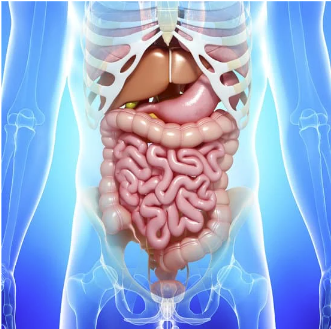sNDA of Fruquintinib Combo Withdrawn in China for Second-Line Gastric/GEJ Cancer
Second-line fruquintinib plus paclitaxel did not sustain sufficient efficacy for patients with advanced gastric or GEJ adenocarcinoma to support approval in China.
Second-line fruquintinib plus paclitaxel did not sustain sufficient efficacy for patients with advanced gastric or GEJ adenocarcinoma to support approval in China.

A supplemental new drug application for second-line fruquintinib plus paclitaxel for patients with advanced gastric or gastroesophageal junction adenocarcinoma has been voluntarily withdrawn in China, according to a press release from HUTCHMED.1
Following a review of the data from the phase 3 FRUTIGA study (NCT03223376) and based on discussions from the National Medical Products Administration of China, it was decided the submission would not support approval at this time.2
“Whilst disappointed by this outcome, we remain optimistic about the utility of fruquintinib in the treatment of gastric cancer. The data set from FRUTIGA demonstrates that fruquintinib plus paclitaxel could offer a promising new treatment option to certain patients in the future, and we are driven to investigate this possibility thoroughly. We look forward to evaluating a path forward and would like to thank both the patients and principal investigators who took part in this study for contributing to a better understanding of this devastating disease,” Weiguo Su, MD, chief executive officer, and chief scientific officer of HUTCHMED, said in the news release.
A total of 703 patients were enrolled and randomly assigned to receive fruquintinib at 4 mg orally once a day for 3 weeks on and 1 week off (n = 351) or matched placebo (n = 352) plus paclitaxel at 80 mg/m2 intravenously on days 1, 8, and 15 of every 4-week cycle.
In the fruquintinib vs placebo arm the median patient age was 57 years vs 59 years, 85.2% vs 85.2% had an ECOG performance status of 1, 82.9% vs 83.0% had a primary tumor located in the stomach, and 68.7% vs 70.5% had no peritoneal metastases, respectively.
The median treatment duration was 4.5 months in the fruquintinib arm vs 2.6 months in the paclitaxel arm. Of note, the median dose intensity was 97.6% vs 100.0%.
The median progression-free survival (PFS) in the intent-to-treat population was 5.6 months (95% CI, 4.6-6.4) in the combination arm vs 2.7 months (95% CI, 2.7-3.5) in the paclitaxel arm (HR, 0.57; 95% CI, 0.48-0.68; P < .0001). The median overall survival (OS) was 9.6 months (95% CI, 8.9-10.8) in the combination arm and 8.4 months (95% CI, 7.8-9.4) in the monotherapy arm (HR, 0.96; 95% CI, 0.81-1.13; P = .6064). Subsequent anti-cancer therapy was given in 52.7% vs 72.2% of patients, respectively. The median follow-up was 31.7 months.
Of those who did not receive subsequent anti-cancer treatment, the median OS was 6.9 months vs 4.8 months (HR, 0.72; 95% CI, 0.53-0.99; P = .0422). For those who did receive subsequent treatment, the median OS was 12.2 months vs 10.0 months (HR, 0.90; 95% CI, 0.73-1.11; P = .3262).
An overall response rate of 42.5% (95% CI, 37.2%-47.8%) in the fruquintinib arm vs 22.4% (95% CI, 18.2%-27.2%) in the paclitaxel arm was reported (P < .0001). In each respective arm, a complete response rate of 1.4% vs 1.4% and a partial response rate of 41.0% vs 21.0% were reported. The disease control rate was 77.2% (95% CI, 72.5%-81.5%) vs 56.3% (95% CI, 50.9%-61.5%; P <.0001) in each arm, respectively. Additionally, the median duration of response was 5.5 months (95% CI, 4.6-6.4) vs 3.7 months (95% CI, 3.7-4.6).
Treatment-emergent adverse effects (TEAEs) of any grade were noted in 99.4% of patients in the fruquintinib arm and 99.4% in the monotherapy arm. TEAEs of grade 3 or higher were noted in 86.9% vs 63.3% of patients and serious TEAEs in 38.6% vs 19.2%.
The most common any-grade TEAEs in the fruquintinib and monotherapy arms were (86.3% vs 73.6%), neutropenia (84.0% vs 72.8%), and anemia (60.3% vs 59.9%).
References
- HUTCHMED provides update on fruquintinib for second-line gastric cancer in China. News release. August 30, 2024. Accessed August 30, 2024. https://shorturl.at/nOMdw
- Xu R, Wang F, Shen L, et al. Fruquintinib plus paclitaxel versus paclitaxel as second-line therapy for patients with advanced gastric or gastroesophageal junction adenocarcinoma (FRUTIGA): a randomized, multicenter, double-blind, placebo-controlled, phase 3 study. J Clin Oncol. 2024;42(suppl 36):438780. doi:10.1200/JCO.2024.42.36_suppl.438780
Newsletter
Stay up to date on recent advances in the multidisciplinary approach to cancer.